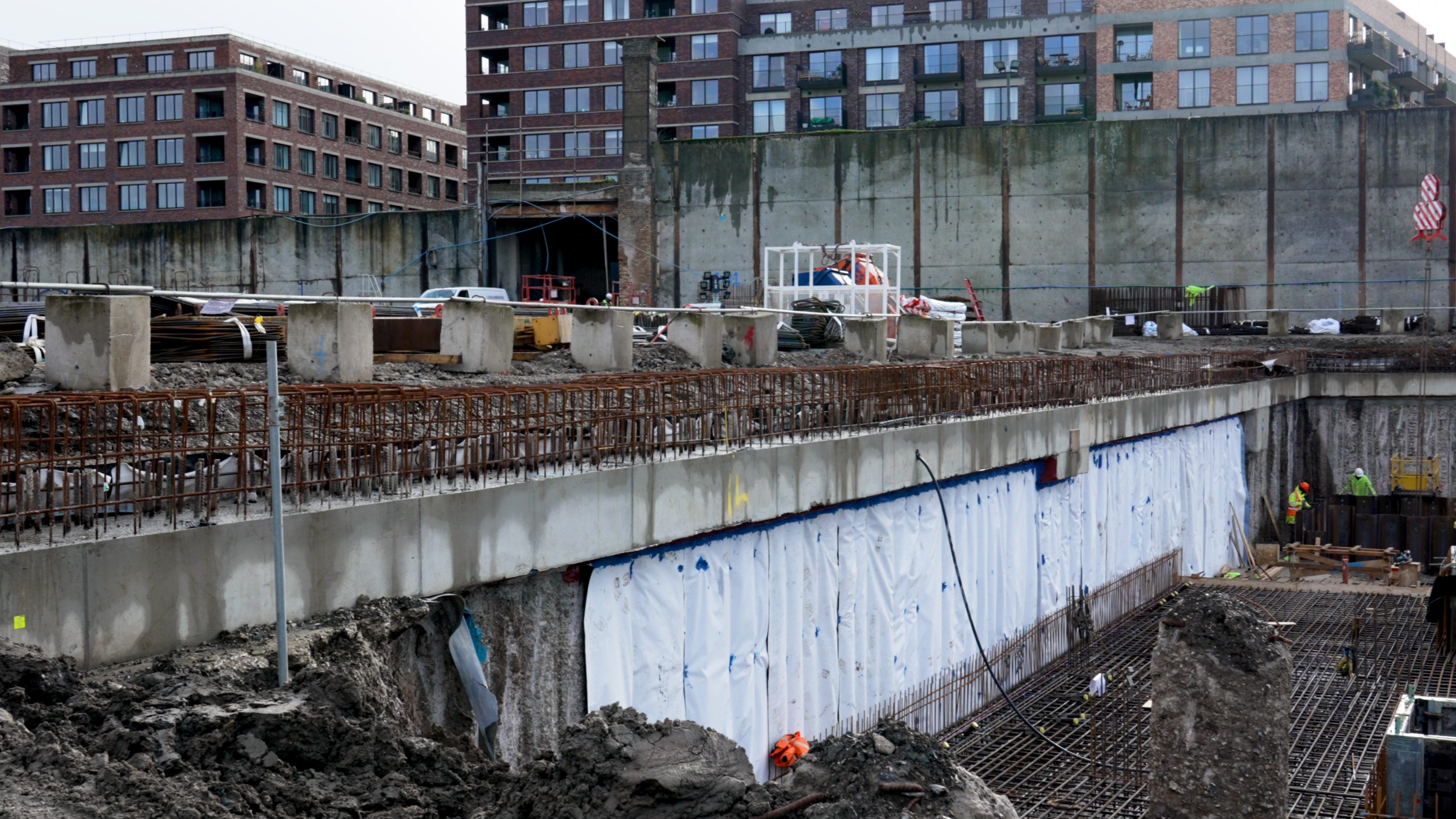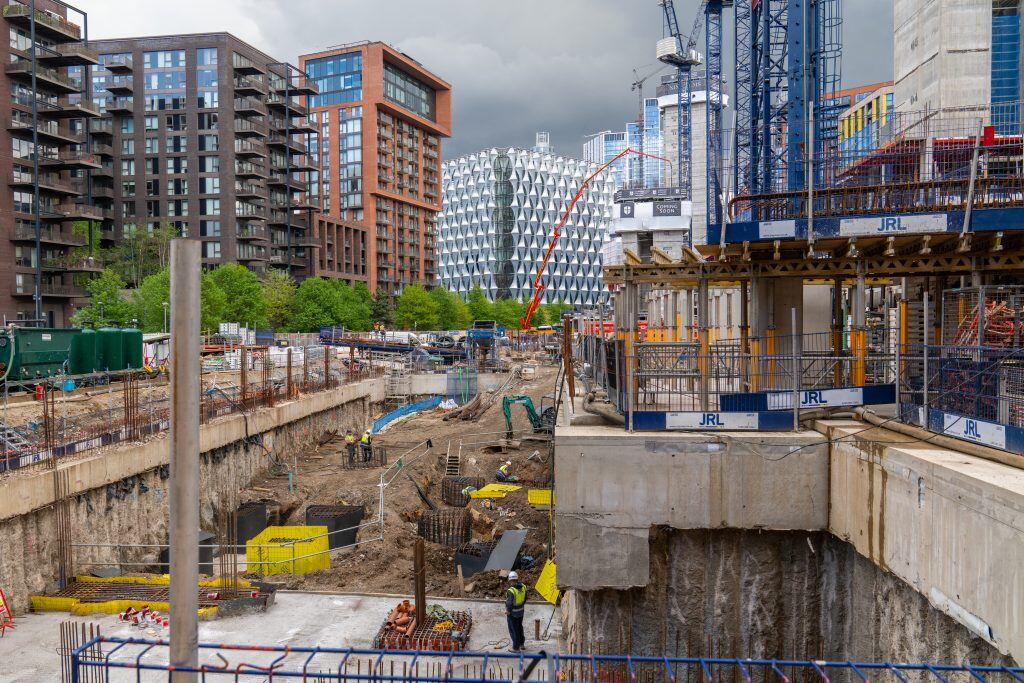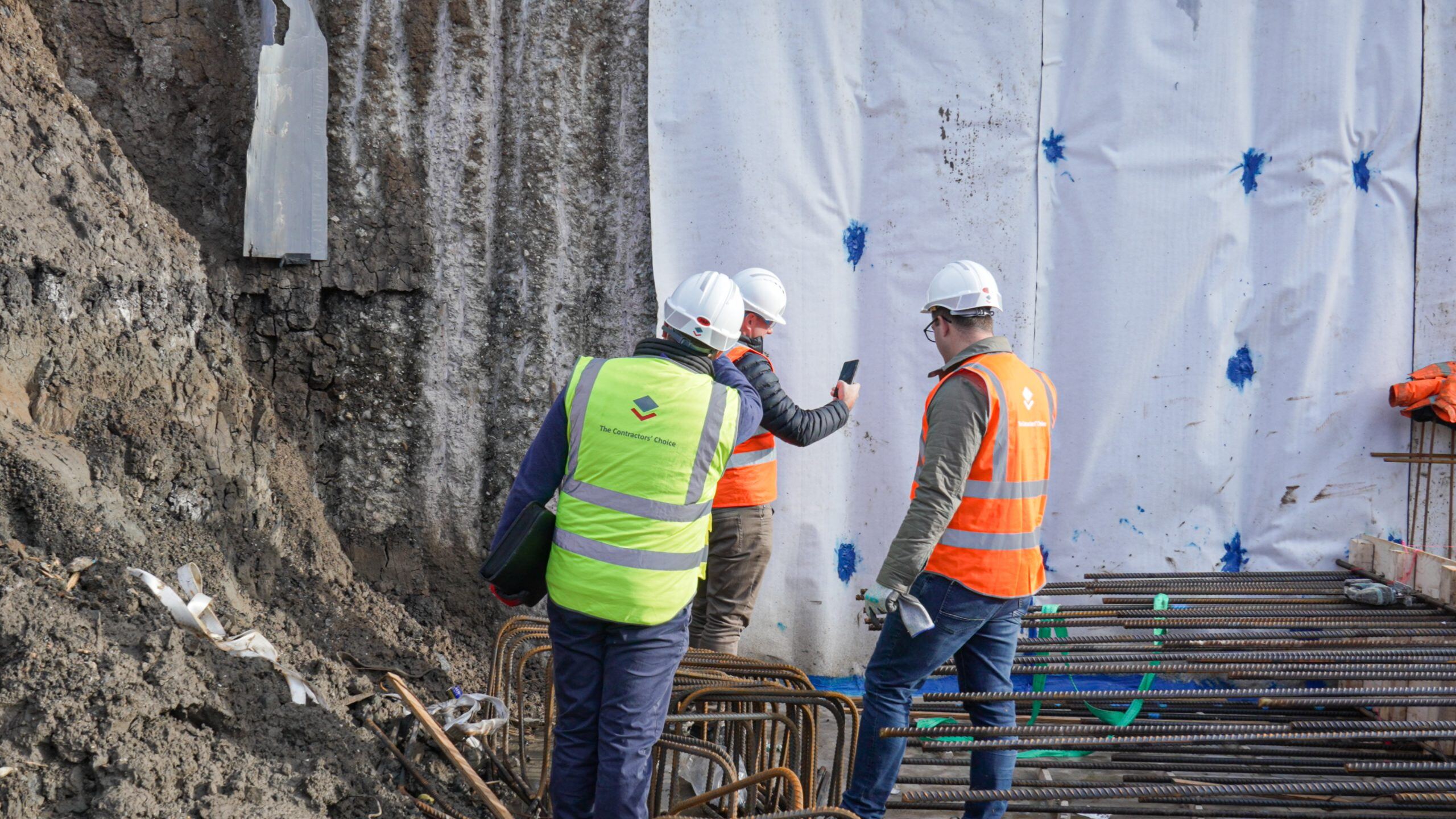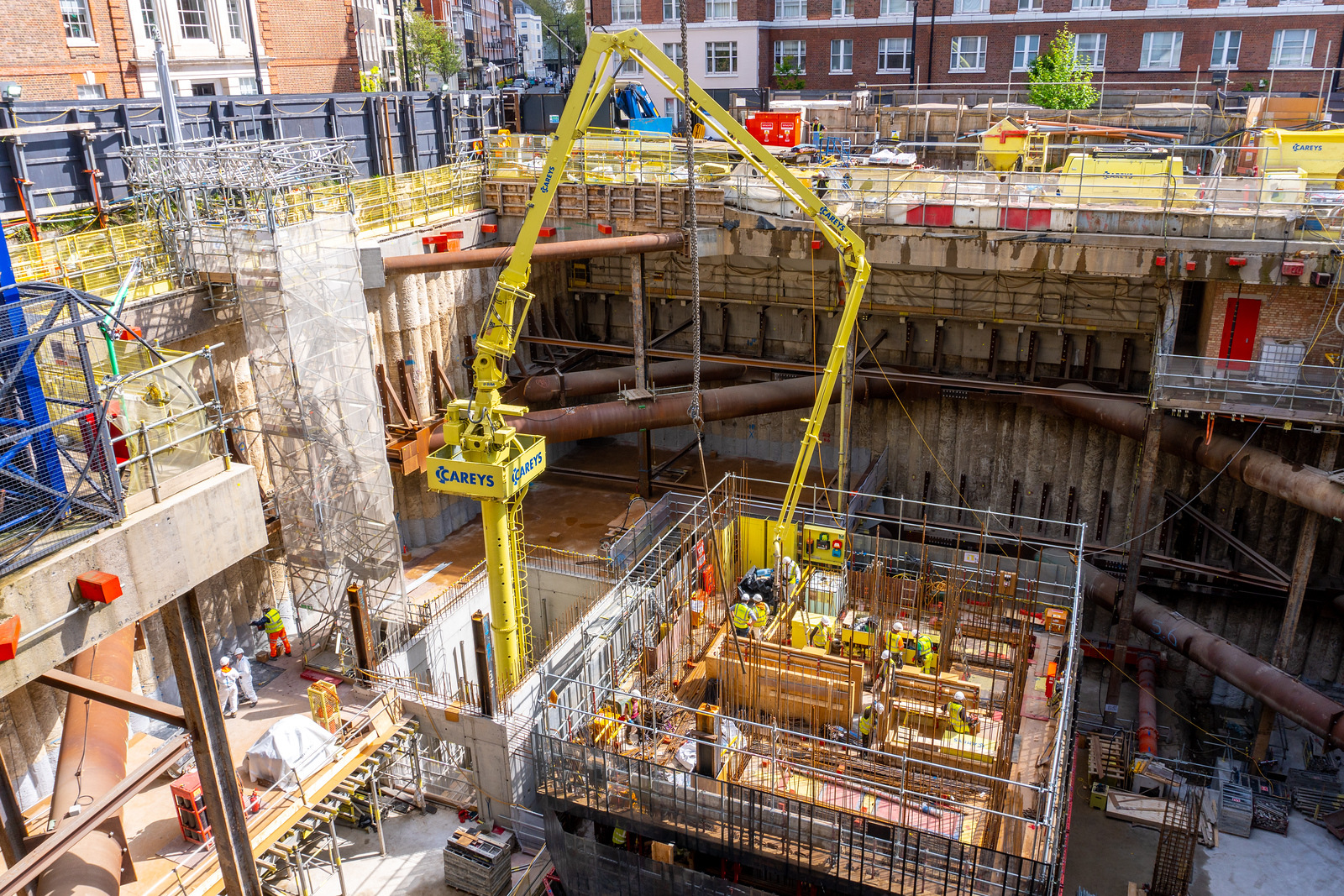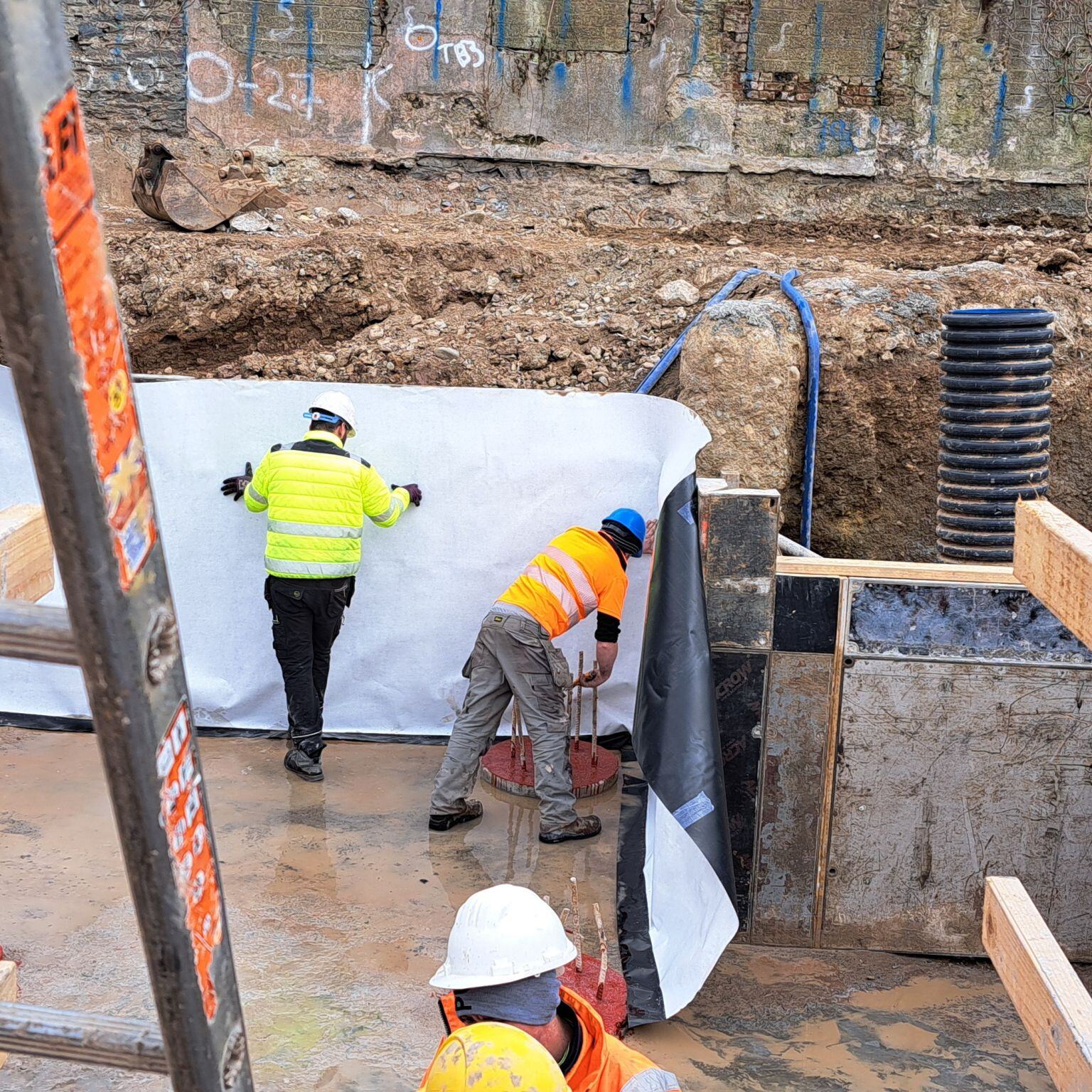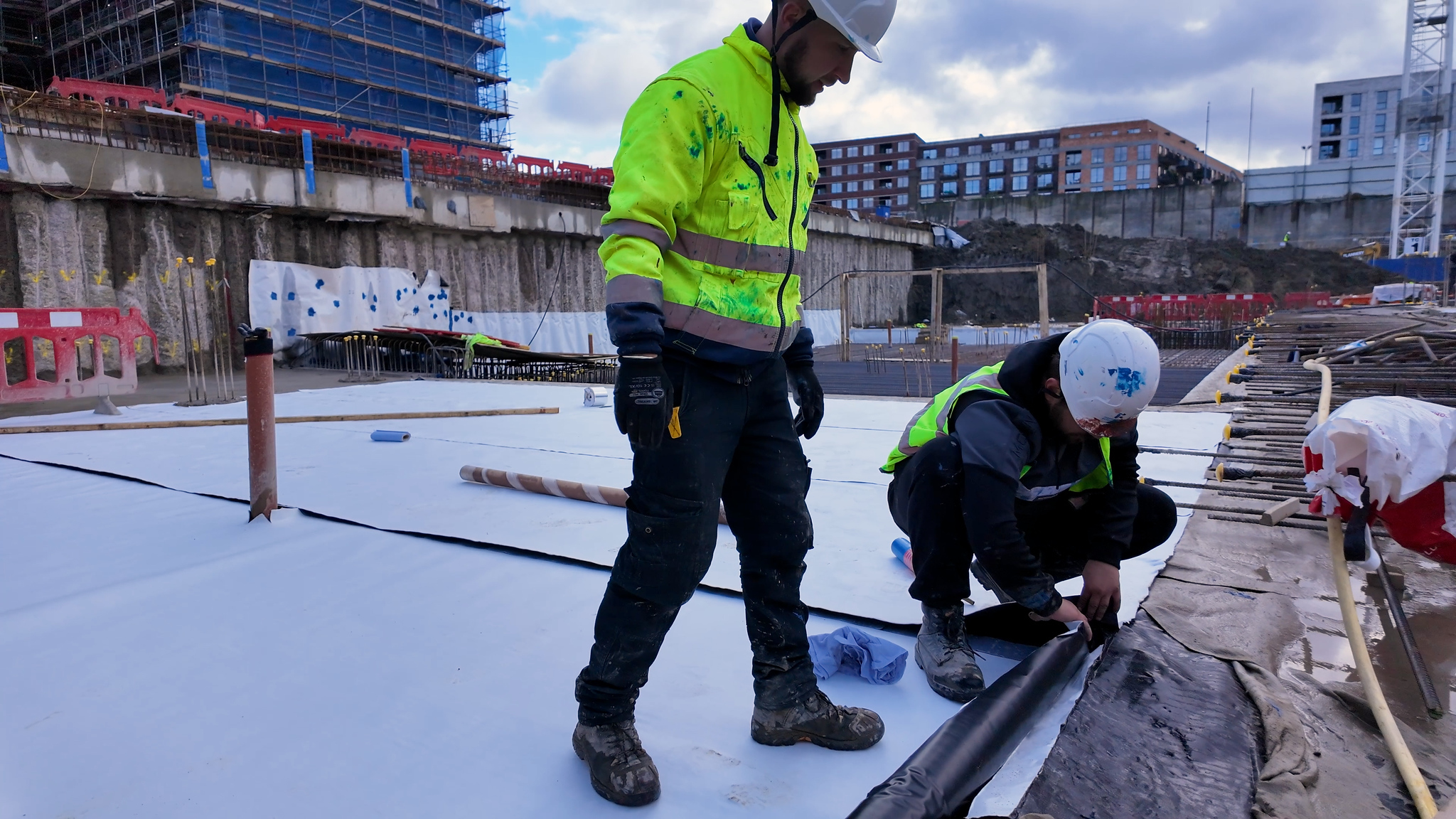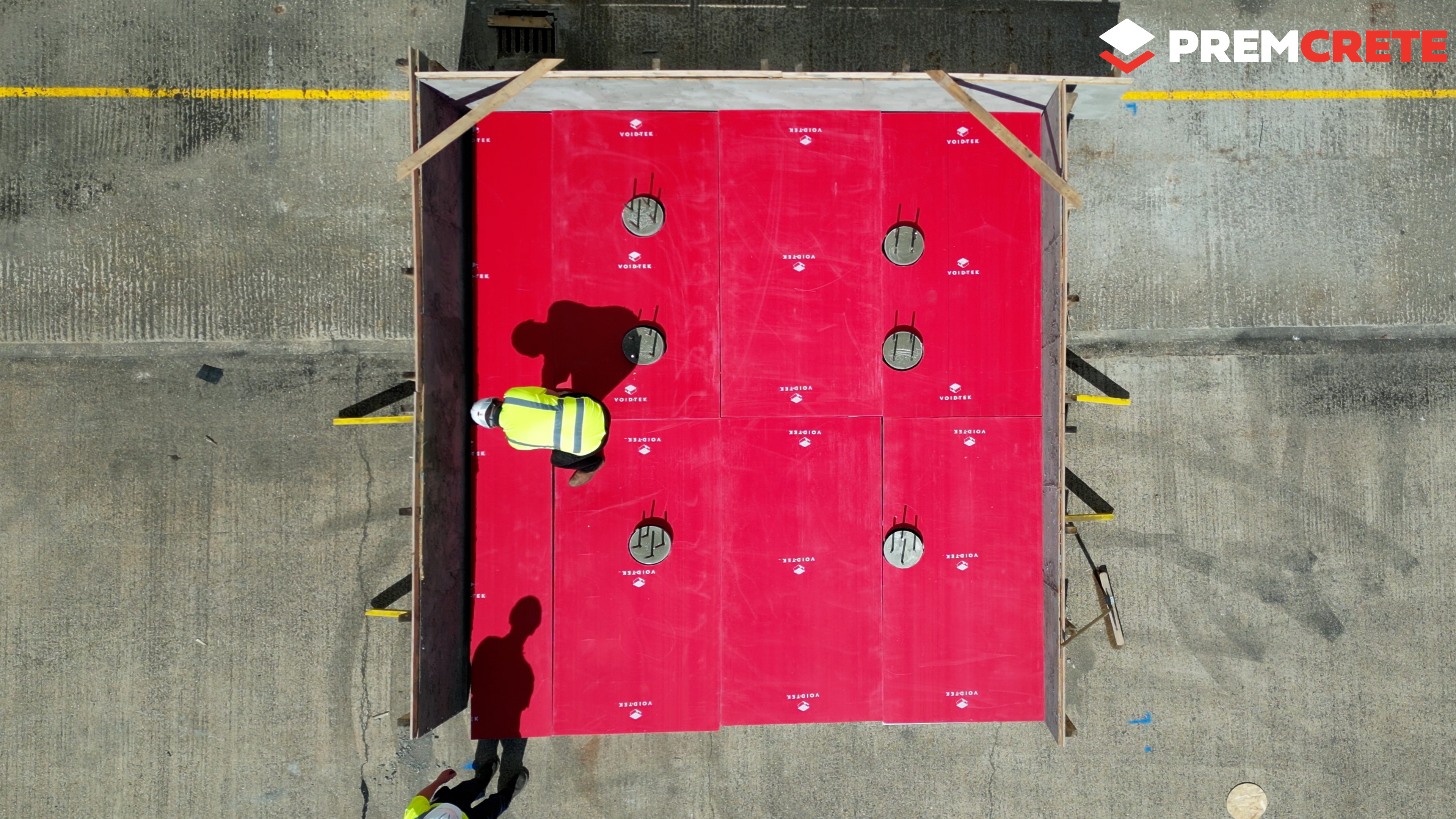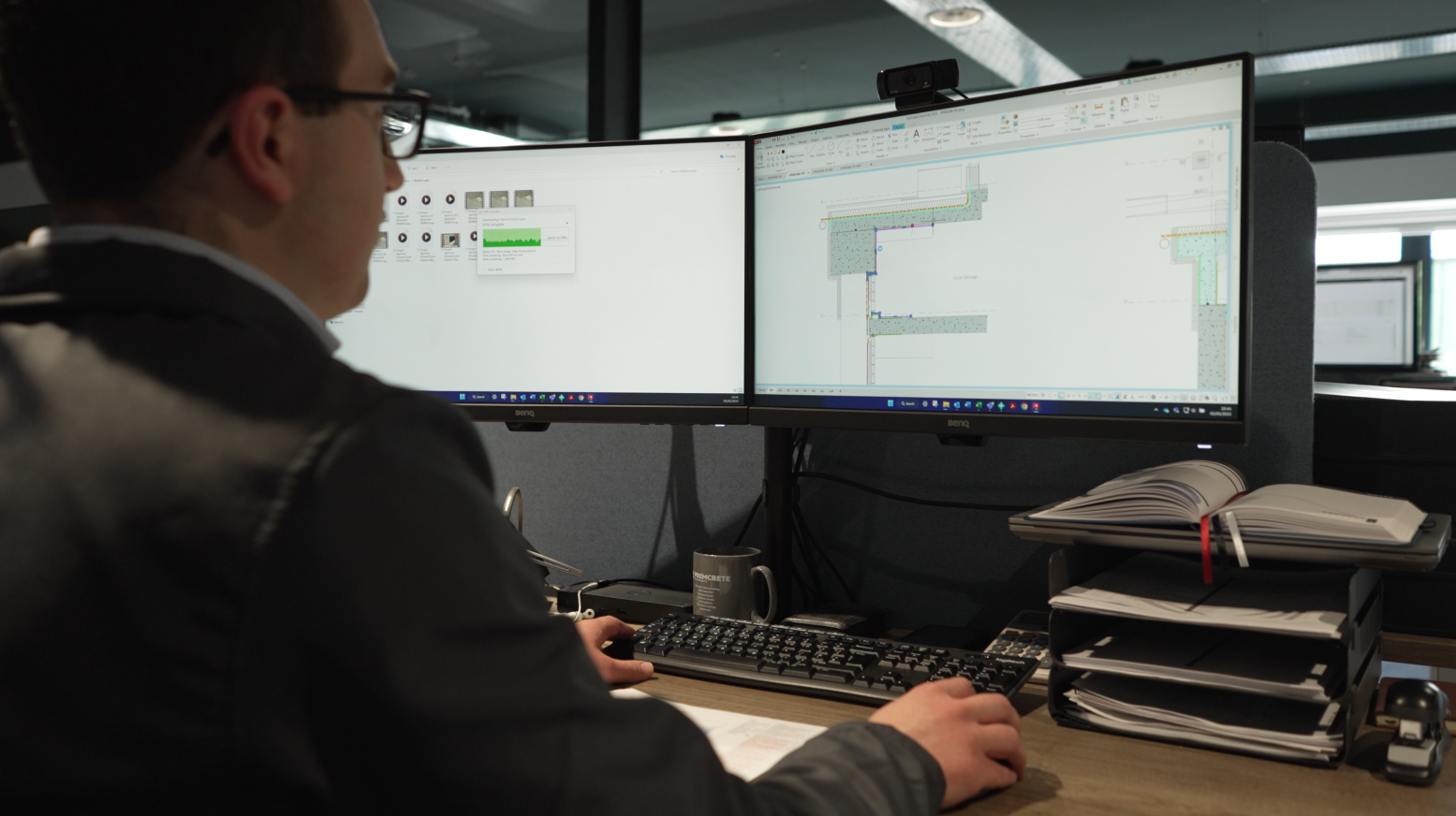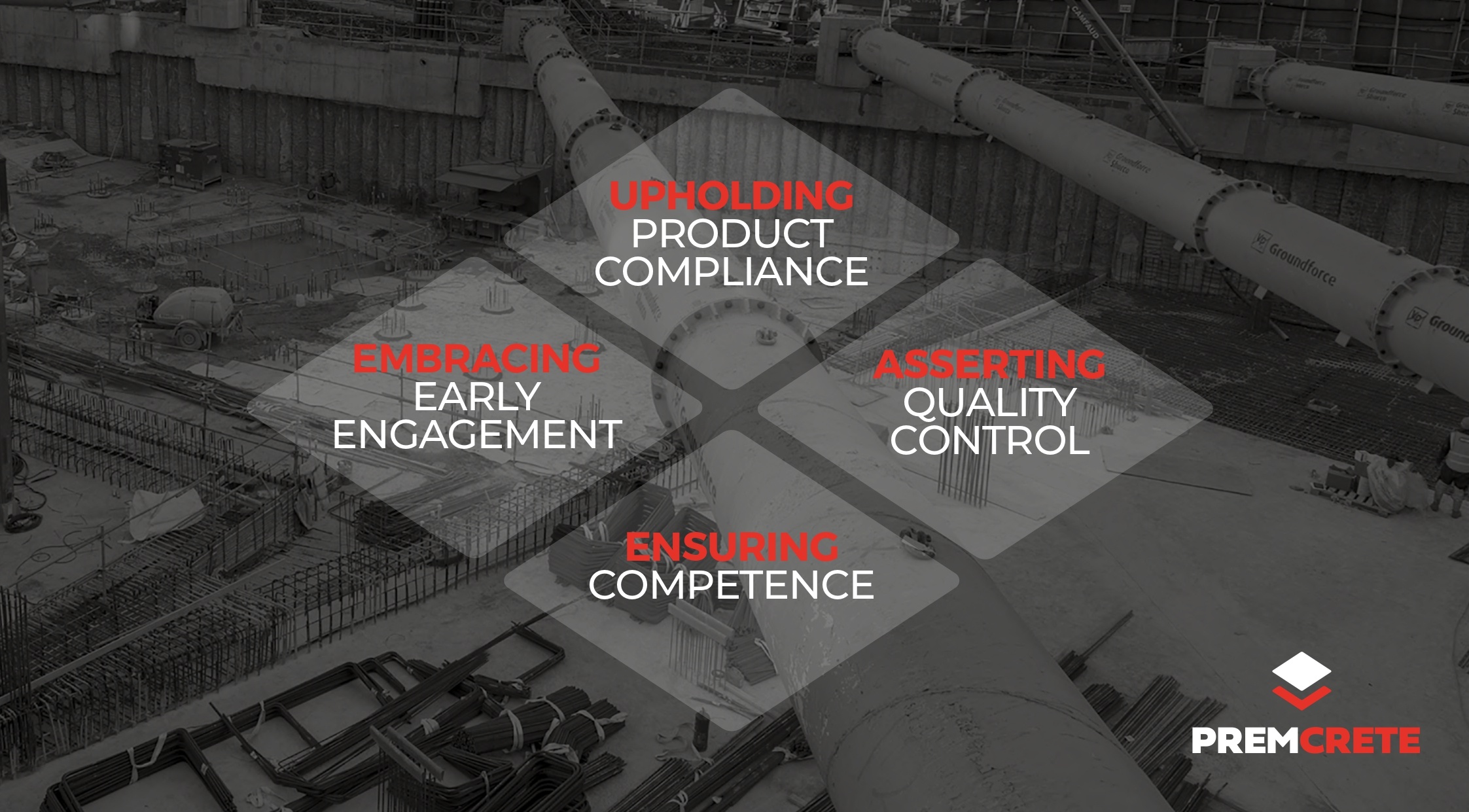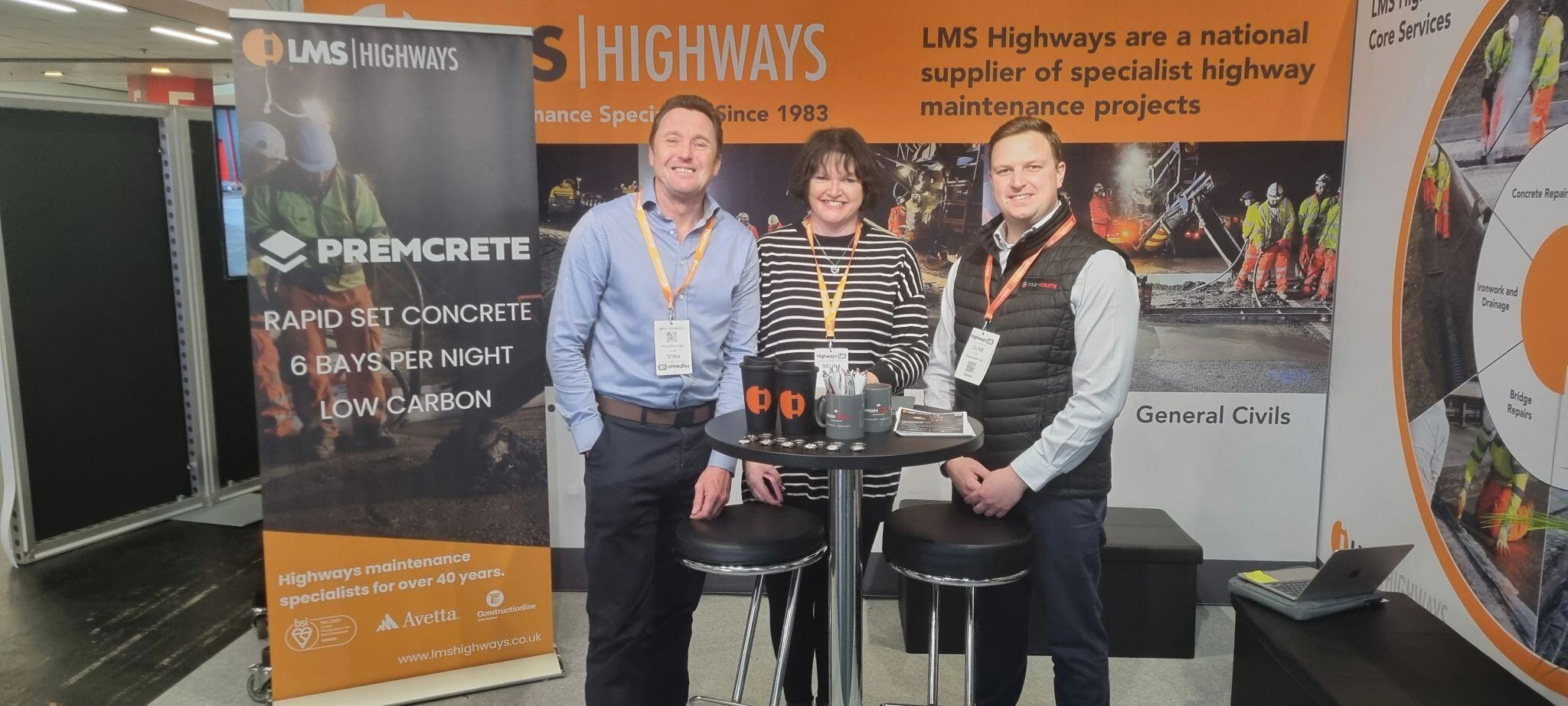Developing a new property requires thorough planning and risk assessment, particularly concerning environmental hazards such as radon, methane, carbon dioxide, and volatile organic compounds (VOCs). Land contamination from historical industrial use or landfill sites can also present significant challenges. Failure to properly assess and mitigate these risks can lead to serious health hazards, regulatory non-compliance, and costly remediation work.
A structured approach to gas risk assessment and mitigation, in line with BS 8485:2015+A1:2019, ensures that developments are safe, sustainable, and fully compliant with UK regulations. This guide explores the key risks, assessment methods, mitigation strategies, and regulatory requirements to help developers navigate these complex challenges effectively.
Radon: The Invisible Threat in Construction
What is Radon?
Radon is a radioactive gas produced by the natural decay of uranium in rocks and soils. It is colourless, doorless, and tasteless, making it undetectable without specialized equipment. While radon disperses harmlessly outdoors, it can accumulate inside buildings to dangerous levels, posing significant health risks.

Health Risks of Radon Exposure
Radon is the second leading cause of lung cancer after smoking, responsible for approximately 1,000 deaths annually in the UK. Prolonged exposure to elevated radon levels increases the likelihood of lung cancer, particularly for smokers.
The UK Health Security Agency (UKHSA) recommends radon mitigation measures when levels exceed 200 becquerels per cubic meter (Bq/m³).
How to Determine if a Site is at Risk from Radon
Before development, it is essential to check radon risk maps provided by:
- The British Geological Survey (BGS)
- UK Radon (Public Health England)
If a site is located in a designated radon risk area, protective measures must be incorporated into the building’s design, following BRE Report BR211: Radon: Guidance on Protective Measures for New Buildings.
Radon Protection Measures
Protective measures are determined based on radon risk classification:
- Low Risk Areas: No special protection required.
- Medium Risk Areas: Installation of a radon-resistant membrane across the building footprint.
- High Risk Areas: Advanced mitigation, including a radon sump and ventilated subfloor voids.
Mitigation techniques include:
- Radon Barriers (Gas-Resistant Membranes): Installed beneath buildings to prevent gas ingress.
- Ventilation Systems: Passive or mechanical ventilation to disperse radon.
- Radon Sumps: Subfloor extraction systems to reduce concentrations.

Ground Gases: Methane, Carbon Dioxide, and VOCs
In addition to radon, other hazardous gases may be present in the ground due to natural geology or historical land use.
Methane (CH₄)
Methane is a flammable gas produced by the decomposition of organic materials, commonly found on landfill sites. Even at low concentrations, methane presents an explosion risk when it accumulates in enclosed spaces.
Carbon Dioxide (CO₂)
CO₂ is a non-flammable asphyxiating gas. High concentrations can displace oxygen in confined spaces, creating suffocation risks.
Volatile Organic Compounds (VOCs)
VOCs originate from industrial solvents, petroleum products, and chemical spills. These gases can migrate through soil and groundwater, infiltrating buildings and causing long-term health issues.
Assessing and Mitigating Ground Gas Risks
A ground gas risk assessment (GRA) is required to determine the level of protection needed. This assessment follows BS 8485:2015+A1:2019, the UK standard for designing gas protection measures.
The assessment process involves:
- Preliminary Investigation (Phase 1 Desk Study): Reviewing site history, past land use, and geological factors.
- Site Investigation (Phase 2 Intrusive Investigation): Gas monitoring over a period of weeks to measure methane, CO₂, and VOC concentrations.
- Gas Characterization & Risk Classification: Categorizing the site’s gas risk and determining appropriate mitigation.
BS 8485:2015+A1:2019 – Achieving Compliance and Score Points
BS 8485 outlines a structured approach for designing gas protection in buildings. It introduces a score-based system where developers must achieve a required number of points based on site risk.
- Determining the Characteristic Situation (CS)
The site’s Characteristic Situation (CS) is determined based on:
- Gas concentrations
- Flow rates
- Ground conditions
- Building type and usage
Sites are classified from CS1 (Low Risk) to CS6 (High Risk) based on the calculated Gas Screening Value (GSV).
- Required Protection Points
BS 8485 mandates that buildings achieve a specific number of points based on their CS classification:
|
Characteristic Situation |
Required Protection Score (Points) |
|
CS1 (Very Low Risk) |
0 Points (No protection required) |
|
CS2 (Low Risk) |
3.5 Points |
|
CS3 (Moderate Risk) |
4.5 Points |
|
CS4 (High Risk) |
6.5 Points |
|
CS5 & CS6 (Very High Risk) |
Special Considerations Required |
- How to Achieve Score Points
BS 8485 allows protection points to be gained from three main categories:
- a) Structural Barrier (Floor Slab)
- A reinforced concrete slab with minimal joints can provide up to 1.5 points.
- A beam and block floor provides up to 0.5 points.
- b) Ventilation Measures
- A passive venting system beneath the building can earn 1.5 to 2.5 points.
- A mechanically ventilated subfloor system can provide up to 3.5 points.
- c) Gas-Resistant Membranes
- Basic gas membrane with no verification: Up to 1.0 point.
- Verified gas membrane installed to BS 8485 standards: Up to 2.5 points.
- Example: Achieving Compliance for a CS3 (Moderate Risk) Site
For a CS3 site, developers must achieve 4.5 protection points. This could be met through:
- A well-sealed concrete floor slab (1.5 points)
- A passive ventilation system (2.0 points)
- A fully verified gas-resistant membrane (1.0 point)
Alternative combinations may be used, as long as the total required score is met.
Land Contamination and Development Risks
Land contamination poses additional risks for new developments. Pollutants such as heavy metals, hydrocarbons, and asbestos can pose environmental and health hazards.
Identifying Contaminated Land
A Phase 1 Contaminated Land Assessment involves:
- Reviewing historical maps to identify past industrial or landfill activity.
- Conducting site inspections for visible contamination.
- Assessing environmental reports for potential risks.
If contamination is suspected, a Phase 2 Site Investigation with soil and groundwater sampling is required.
Remediation Strategies
- Excavation & Removal: Contaminated soil is physically removed and replaced.
- Soil Stabilization: Binding agents are used to immobilize contaminants.
- Capping Systems: Contaminants are isolated beneath protective layers.
- Bioremediation: Microbial treatments degrade pollutants in the soil.
All remediation must comply with the Environmental Protection Act 1990 and Part 2A Contaminated Land Regulations.
Key Takeaways for Developers
- Early Risk Assessment: Conduct gas monitoring and contamination assessments at the planning stage.
- Regulatory Compliance: Ensure gas protection measures align with BS 8485, CIRIA C735, and NHBC standards.
- Engage Qualified Specialists: Work with geotechnical and environmental consultants.
- Verification & Quality Assurance: Proper installation of membranes, ventilation, and remediation strategies must be verified.
- Long-Term Monitoring: Install gas detection systems if required.
By implementing a BS 8485-compliant protection strategy, developers can mitigate risks, safeguard building occupants, and ensure regulatory approval. Addressing radon, ground gases, and land contamination proactively will contribute to a safe, resilient, and compliant development.

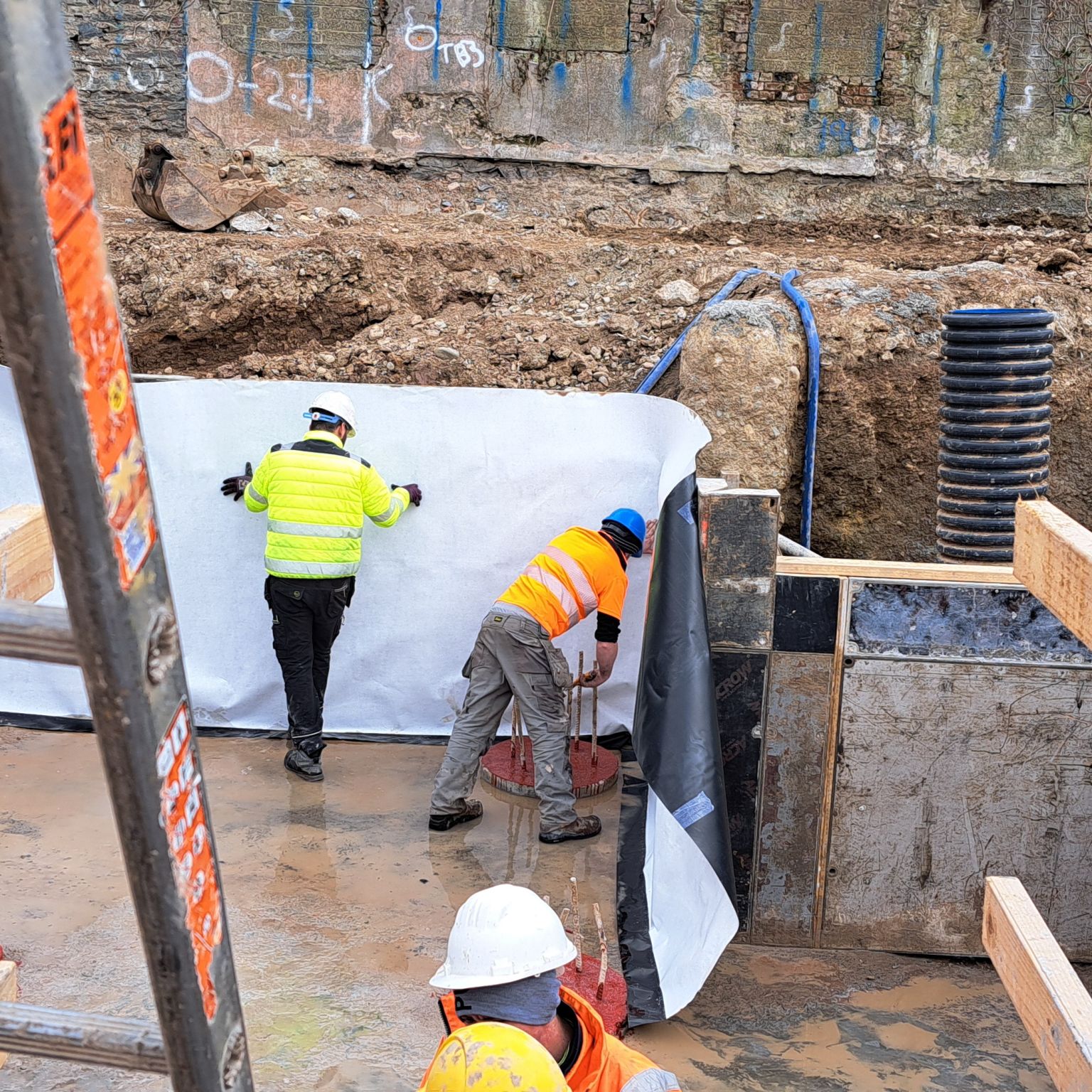
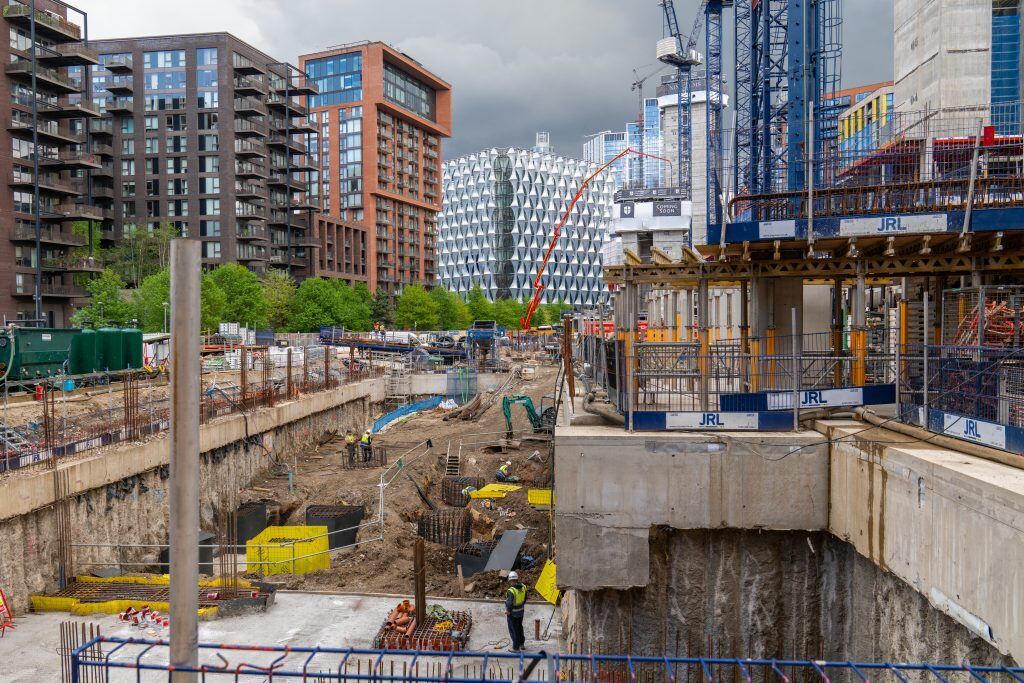
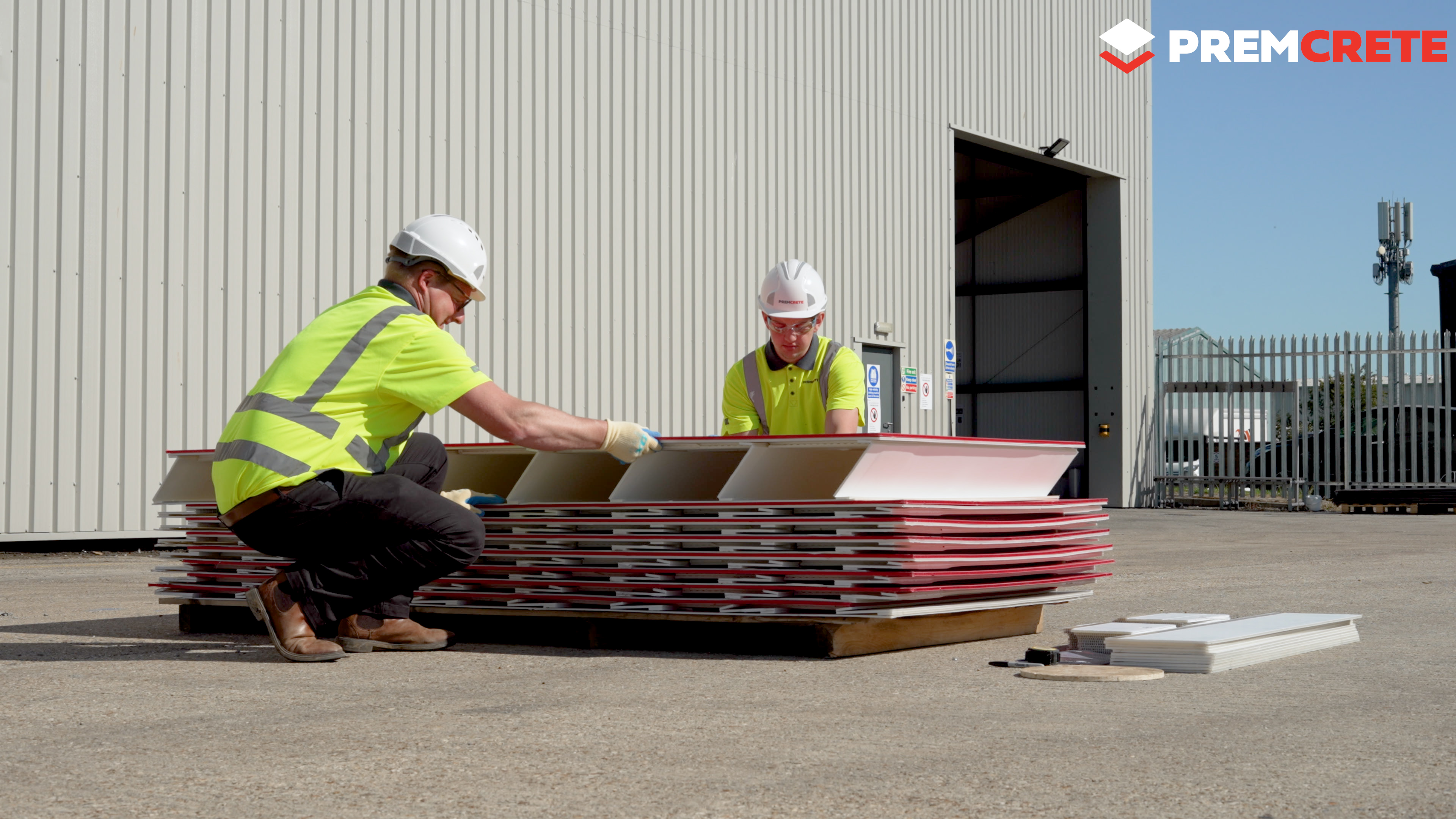
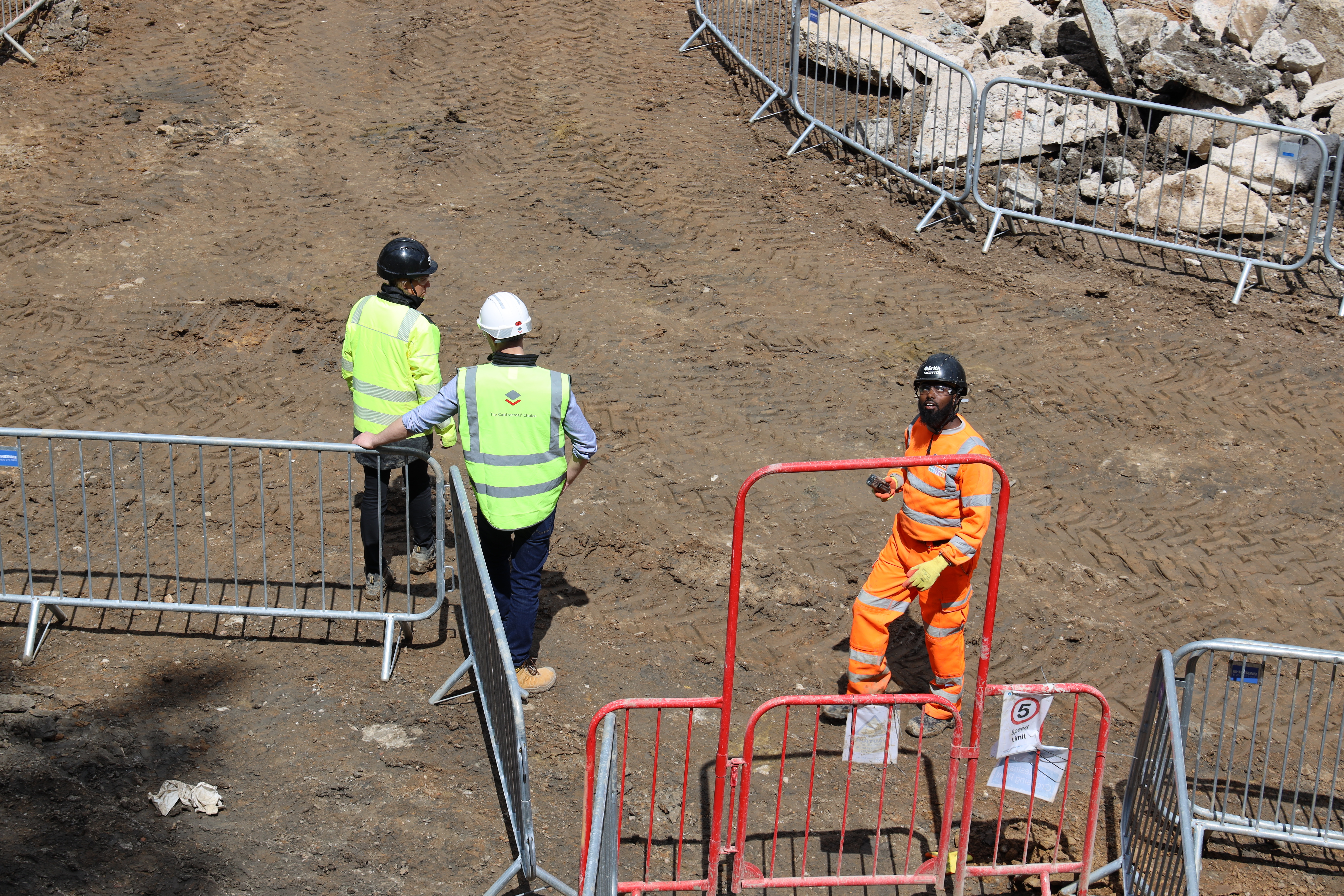

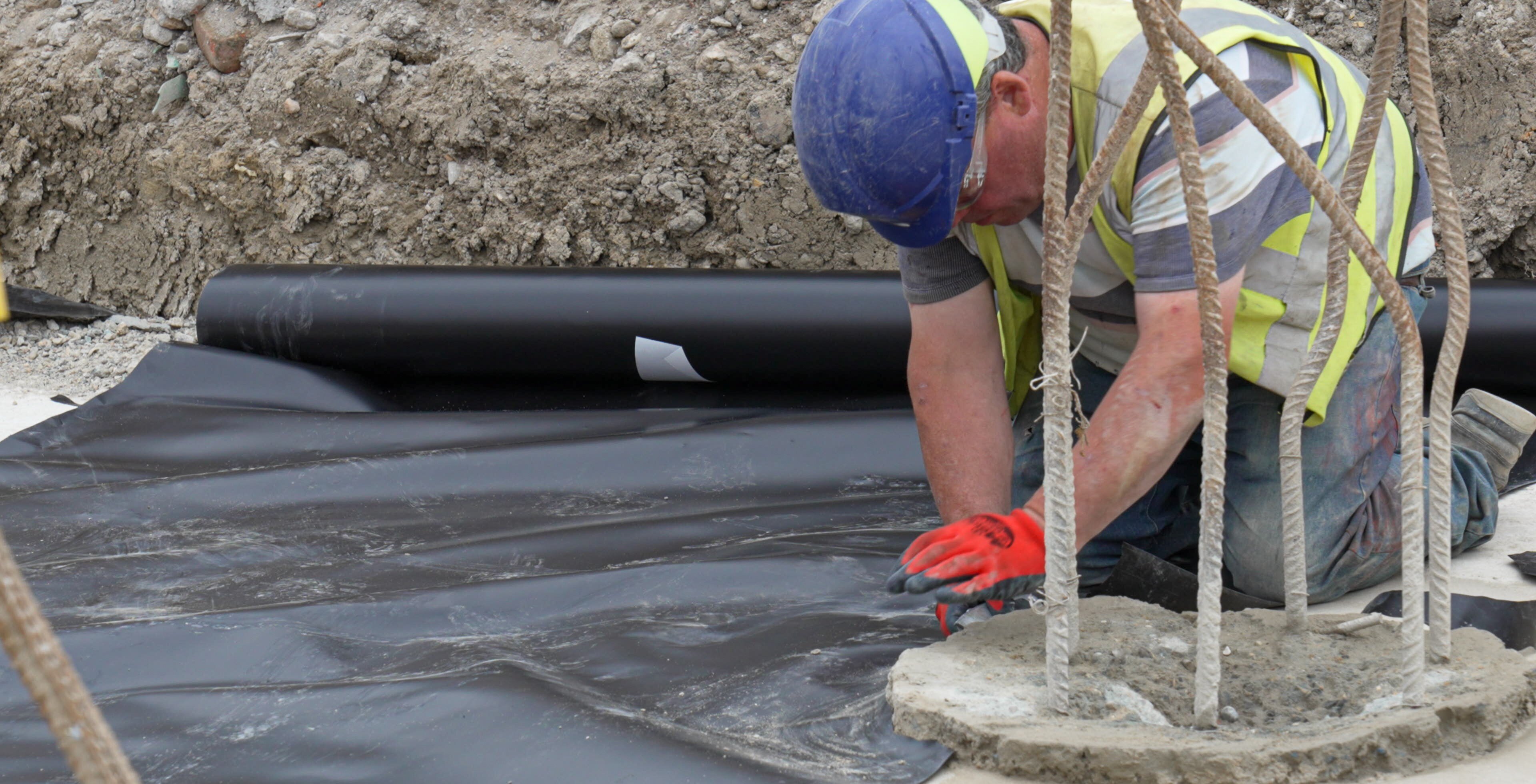
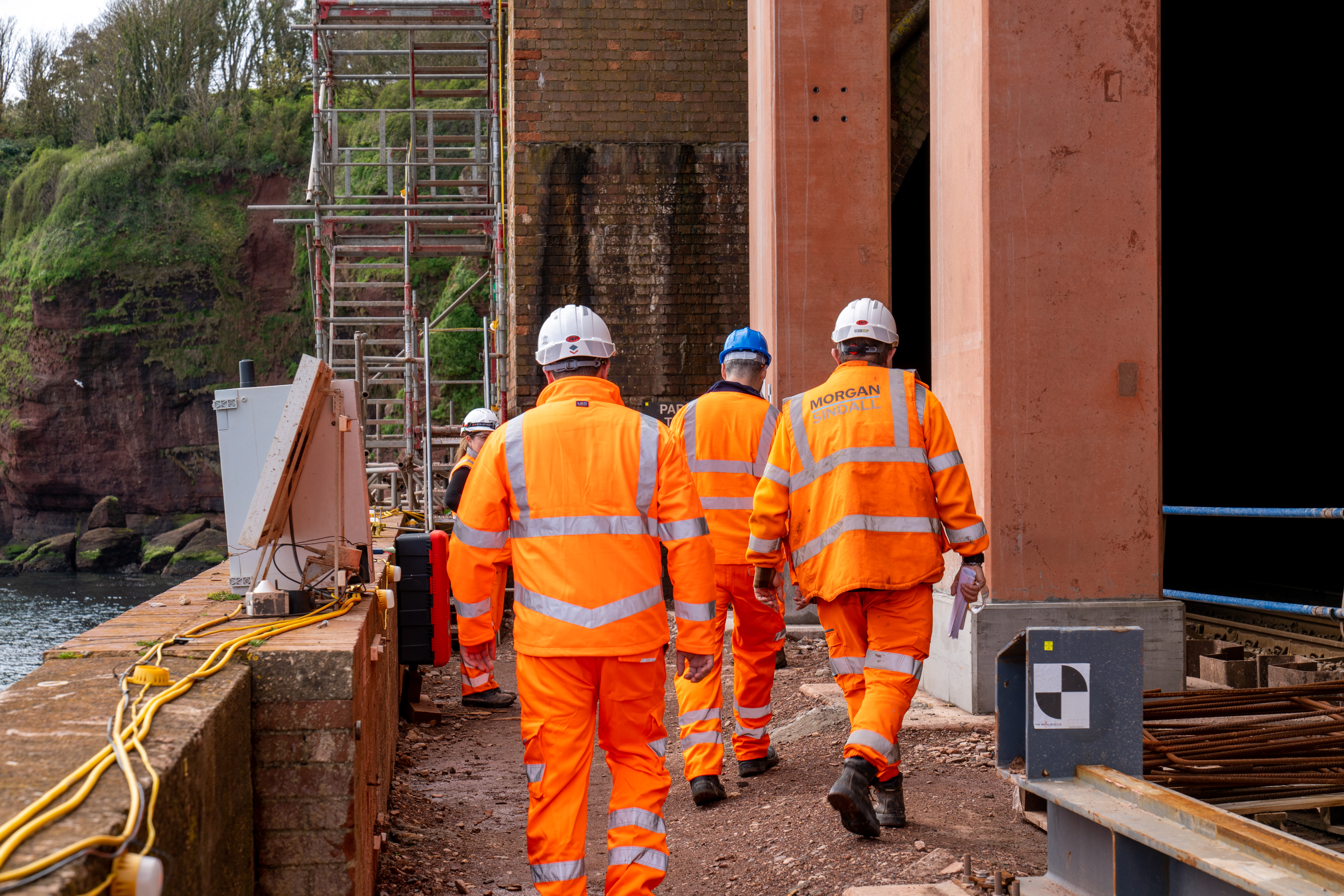

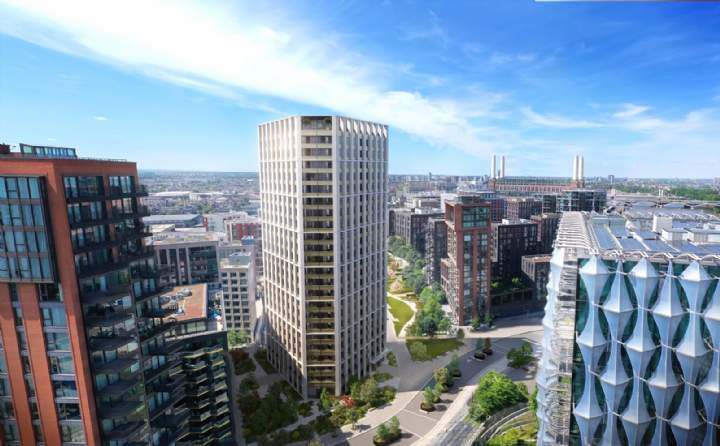
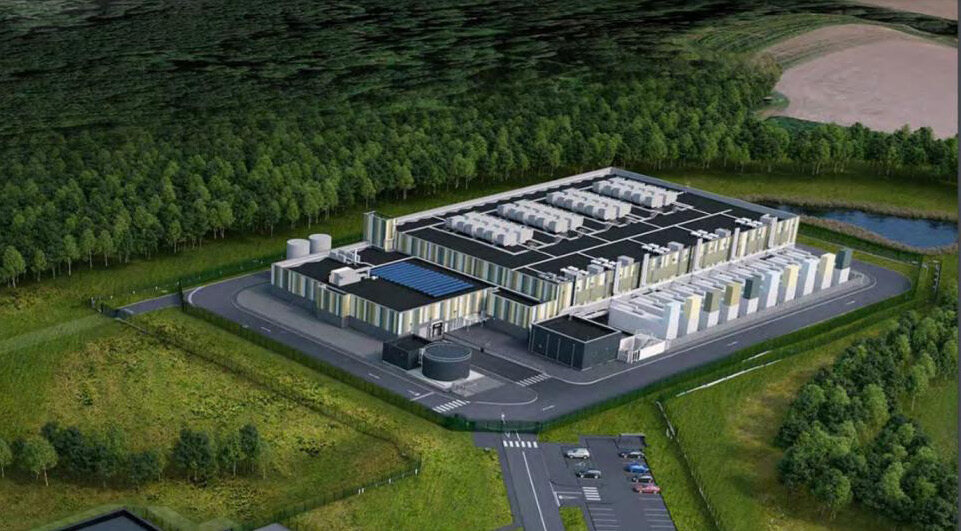
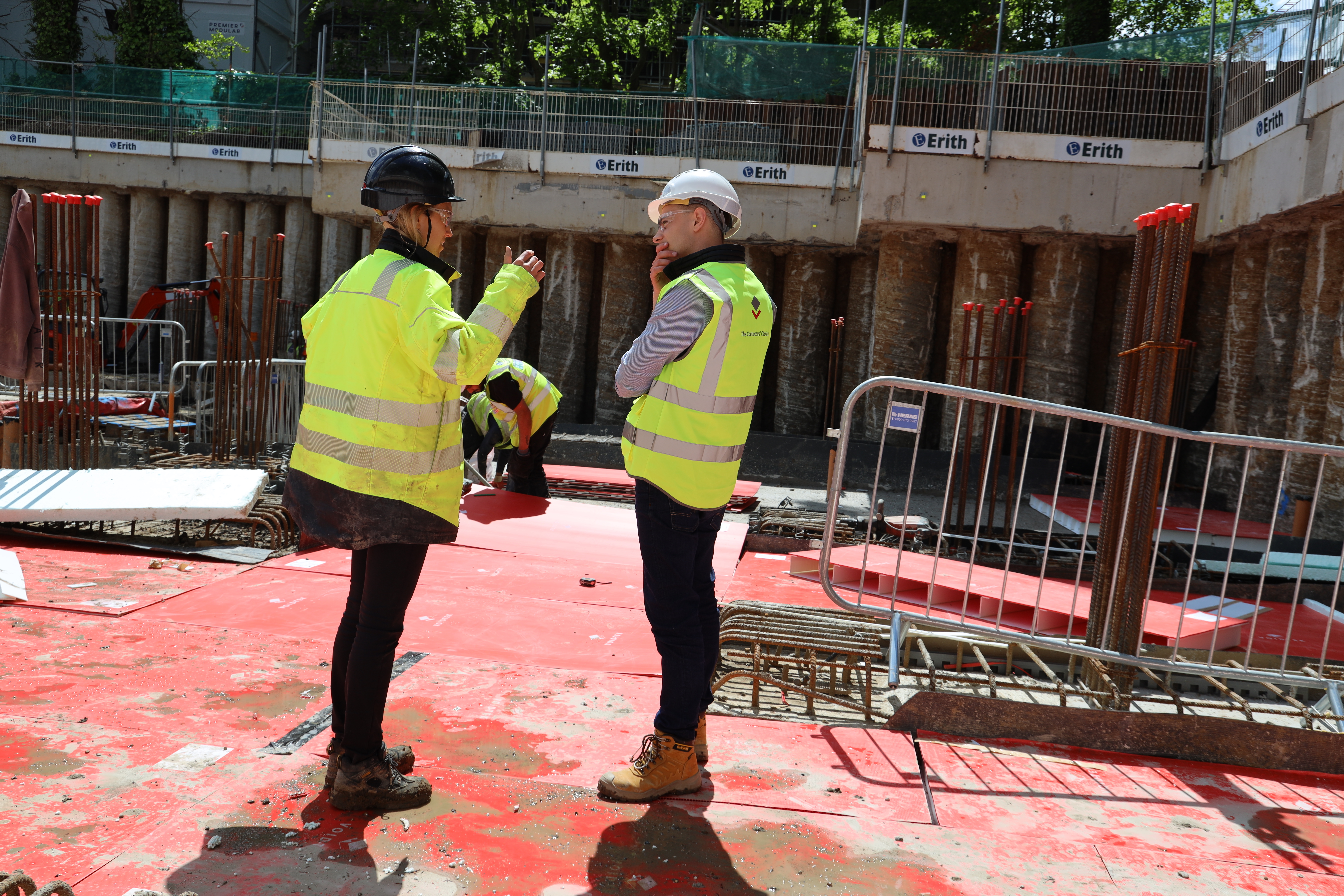
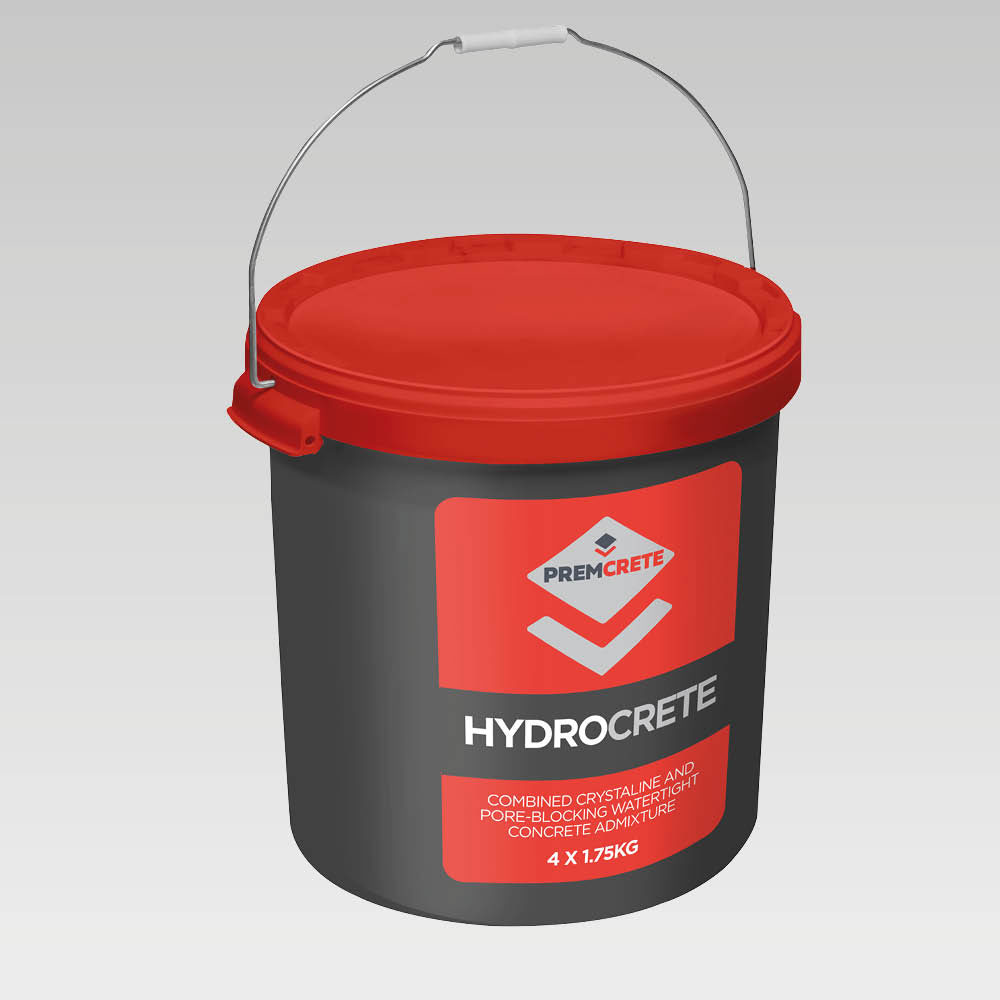
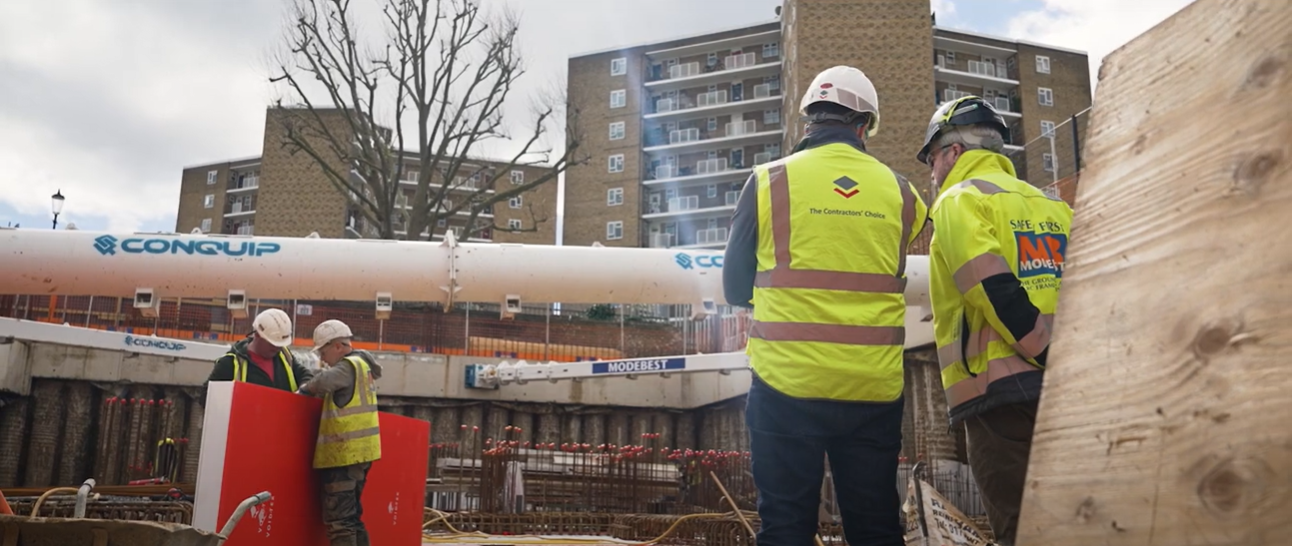
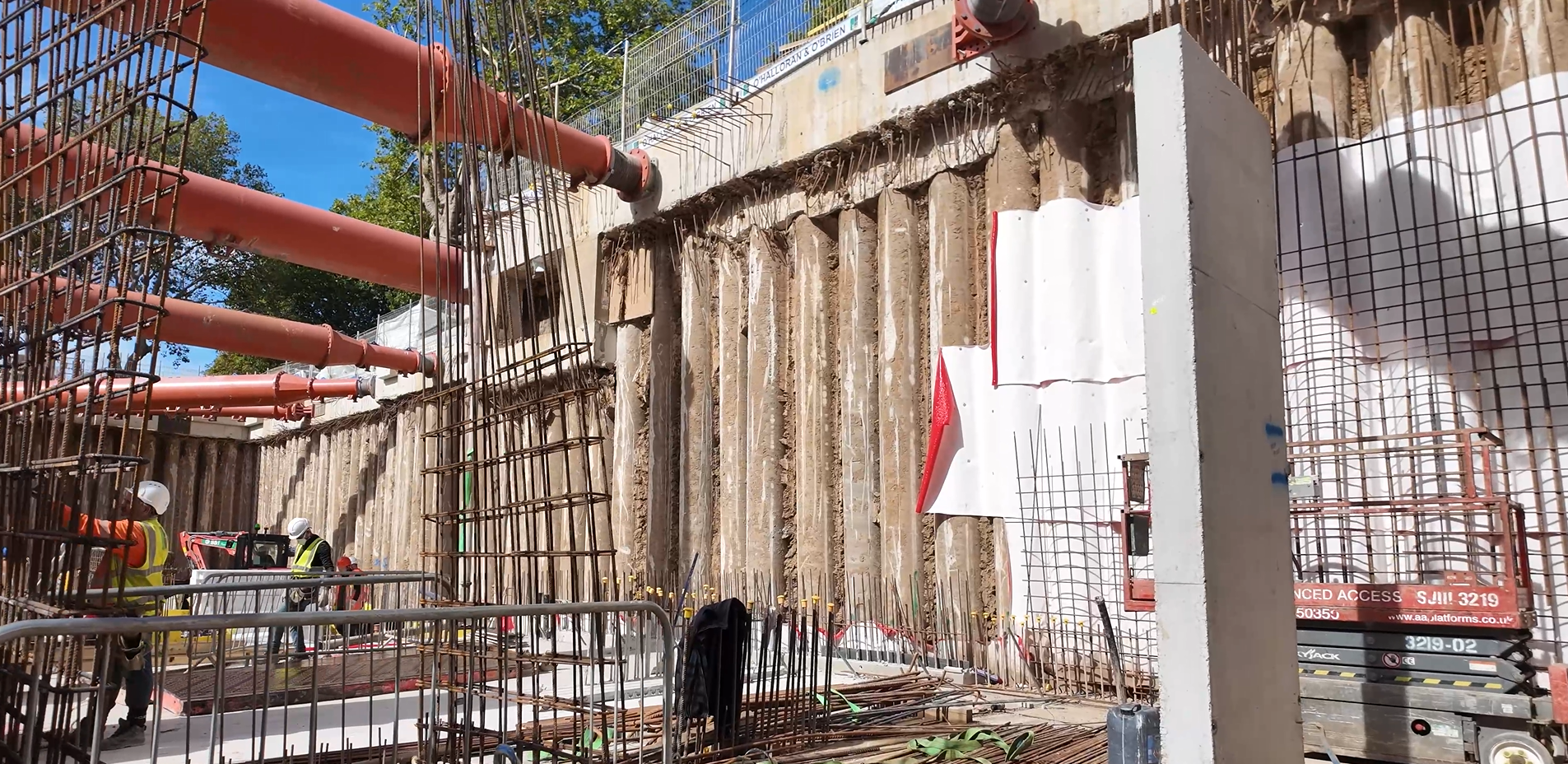
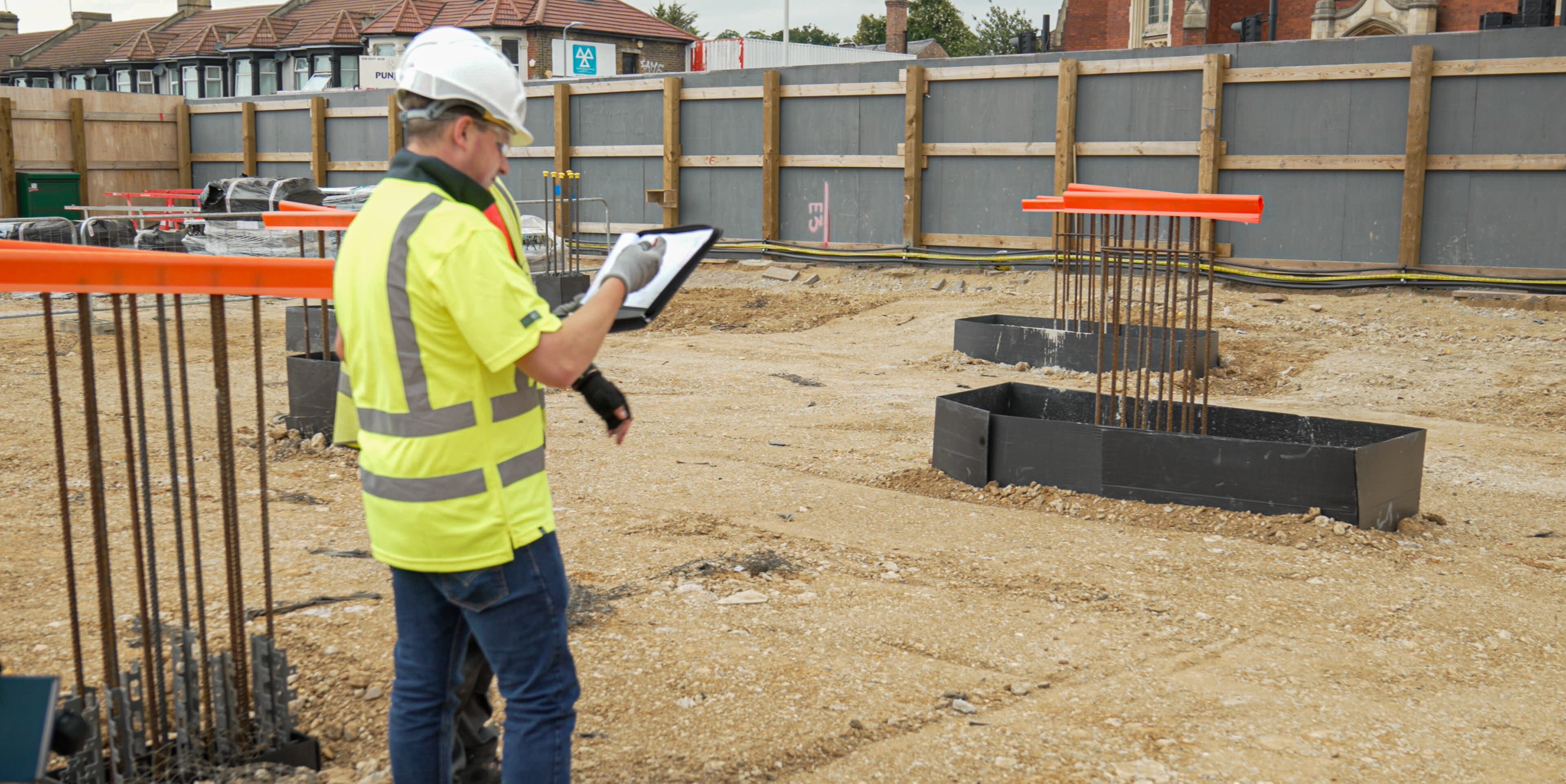
-1.jpg)
